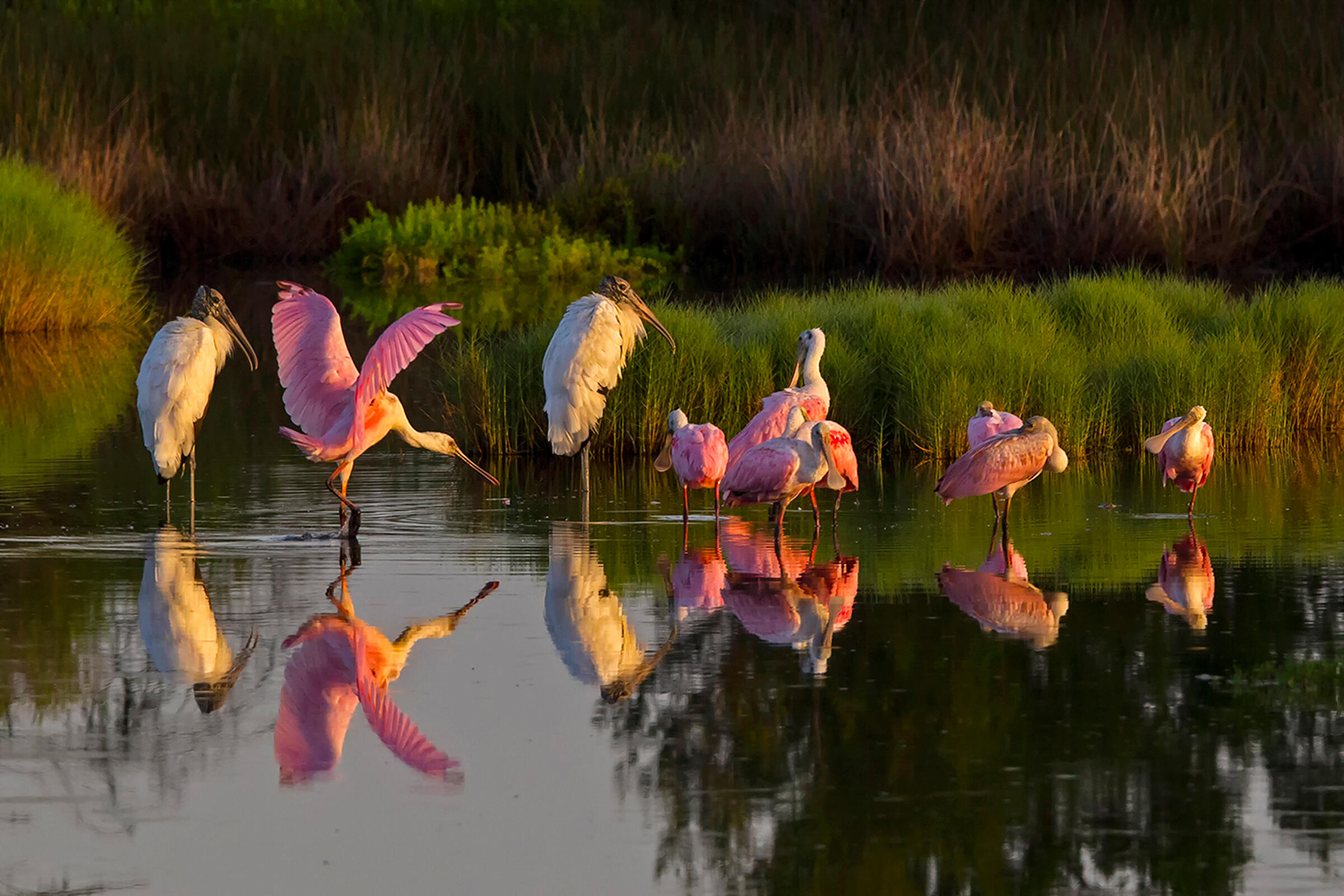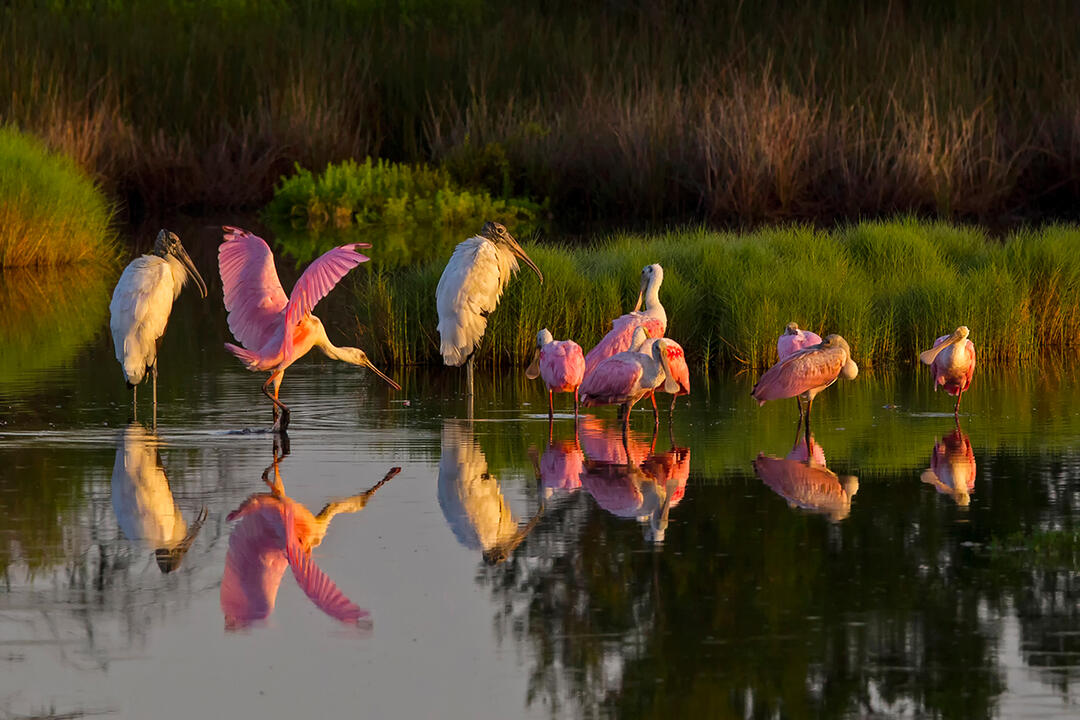Seagrasses provide foraging opportunities for an assortment of wildlife, including the Great White Heron, Reddish Egret, Tricolored Heron, and American White Pelican. Mangrove islands and tree canopies serve as roosting and nesting areas for coastal and oceanic birds. Unfortunately, the spoonbill and other resident and migratory bird species face a number of threats, including loss of habitat and forage, as well as human impacts from boating, fishing, snorkeling, and wildlife tours that disturb roosting, nesting, and foraging activity. Studies demonstrate that even well-intentioned human interactions can negatively affect birds.[l]
To address these and other threats, Sanctuary managers are engaged in the first comprehensive overhaul of the zoning and regulations that govern the Sanctuary. Based on nearly 30 years of cutting-edge science, the "Restoration Blueprint" aims to reduce stressors while increasing the resilience of the ecosystem.
Audubon's Everglades Science Center and Everglades Policy teams are actively engaged in Sanctuary restoration, advocating for enhancements to existing Wildlife Management Areas (WMAs), and the creation of new WMAs. We support designating areas with sensitive bird populations that are incompatible with human activity as "no-entry zones." In other areas, a combination of no motor, idle speed only, and no anchor zones may be sufficient to achieve Sanctuary conservation goals while providing opportunities for compatible uses. Enhancing WMAs will help protect resident and migratory birds and improve the long-term health of the Sanctuary.
Read the full Florida Keys National Marine Sanctuary Restoration Blueprint here.
[1] Rochelle Steven, Catherine Pickering and J. Guy Castley. 2011. A review of the impacts on nature based recreation on birds. Journal of Environmental Management 92:2287-2294






